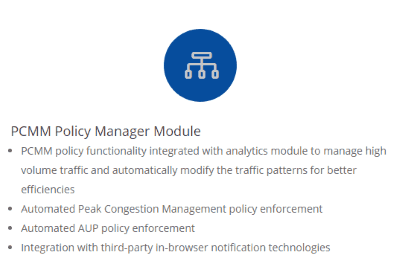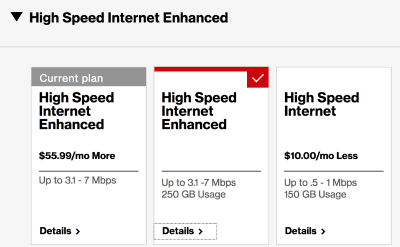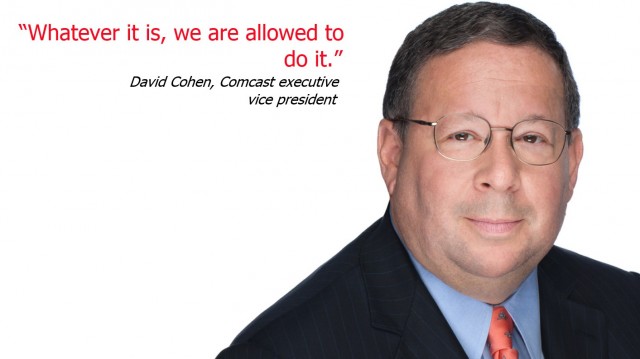
OpenVault’s technology can automatically slow down “abusers” who use too much internet service.
Cable companies looking for ways to raise prices for their broadband services without spending money on network upgrades may be interested in OpenVault’s “Revenue Accelerator” — a cloud based internet usage measurement system that can help push subscribers into higher priced tiers or warn them when they are about to face punitive overlimit fees for exceeding their monthly usage allowance.
OpenVault’s goal is to monetize customers’ internet usage, making cable operators certain each customer is paying as much as possible for internet service without facing customer-displeasing overlimit fees from exceeding their monthly usage allowance.
“All these solutions are designed really to do of a couple things,” said OpenVault CEO and founder Mark Trudeau, in an interview with FierceTelecom. “One is to drive incremental revenues, and two is to drive costs [for cable operators] down, all with the idea of increasing profit for cable operators.”
OpenVault will collect customers’ usage behaviors, reporting back every 15 minutes how much bandwidth each customer is using, as well as enforcing cable company policies to automatically slow down “abusers” who are sending and receiving more than their fair share of data. Enforced network management, built into the platform, can automatically punish customers based on violations of the ISP’s Acceptable Use Policies. Usage violators are then reported to the cable operator, targeted for future marketing campaigns to upgrade their service to a more expensive tier to avoid further time-outs on the internet slow lane.
The technology is cheap to deploy, relying on a set of command lines inserted into cable modem termination systems that collect Internet Protocol Detail Record data and send it on to OpenVault.
![]() “We measure all that for the operators and then what our Revenue Accelerator product does is it helps them micro-target their upgrade candidates,” Trudeau said. “This can have just really massive impacts on their revenues, to be able to truly not just micro-target the upgrade candidates, but also provide their reps with the ammunition they need and the visibility they need into their customer’s behavior and into their homes so they can intelligently talk to a subscriber.”
“We measure all that for the operators and then what our Revenue Accelerator product does is it helps them micro-target their upgrade candidates,” Trudeau said. “This can have just really massive impacts on their revenues, to be able to truly not just micro-target the upgrade candidates, but also provide their reps with the ammunition they need and the visibility they need into their customer’s behavior and into their homes so they can intelligently talk to a subscriber.”
OpenVault claims the implementation of usage based billing and data caps are immediate money-makers for operators, both from current customers forced to upgrade to avoid the cap and from overall usage billing that delivers an immediate payday to cable operators without having to invest in expensive upgrades or service improvements.
“In real-number terms, evidence shows an immediate return as some OpenVault customers have enjoyed as much as seven percent of subscribers upgrading their service within 90 days of usage based billing deployment,” the company wrote on its blog. “For some operators, this translates into increased ARPU (average revenue per unit) of over $5 per subscriber per month. OpenVault customers that have deployed usage based billing have experienced increased ARPU ranging from $1.50 up to $12 per subscriber per month.”


 Subscribe
Subscribe Comcast has quietly dropped its internet congestion management system, designed to slow down its heaviest users, claiming it has gone unused for more than a year and was no longer needed.
Comcast has quietly dropped its internet congestion management system, designed to slow down its heaviest users, claiming it has gone unused for more than a year and was no longer needed. Charter Communications is abandoning any pretense of data caps on its internet service by decommissioning its internet usage measurement tool for residential subscribers effective this July.
Charter Communications is abandoning any pretense of data caps on its internet service by decommissioning its internet usage measurement tool for residential subscribers effective this July.

 A 2016 study suggests Comcast may have more heavy users than it is willing to admit. The research firm iGR found average broadband usage that year was already at 190 GB and rising. There is no third-party verification of providers’ usage statistics or usage measurement tools, but there are public statements from Comcast officials that suggest the company faces a predictable upgrade cycle to deal with rising usage.
A 2016 study suggests Comcast may have more heavy users than it is willing to admit. The research firm iGR found average broadband usage that year was already at 190 GB and rising. There is no third-party verification of providers’ usage statistics or usage measurement tools, but there are public statements from Comcast officials that suggest the company faces a predictable upgrade cycle to deal with rising usage.